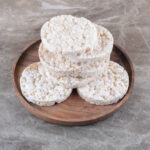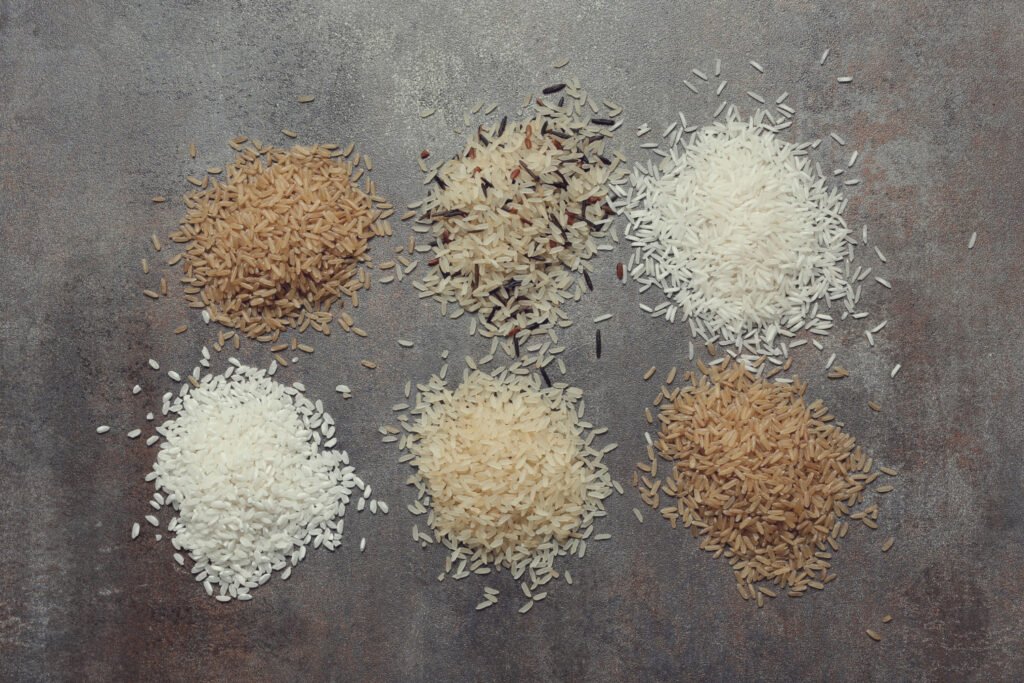
Table of Contents
Overview
Rice is a staple food for billions of people worldwide, providing an essential source of carbohydrates. While white rice is the most common, there are several other types that offer superior nutritional value and health benefits. With over 110,000 varieties of rice cultivated globally, selecting the right type of rice can significantly impact your overall health. In this article, we’ll explore the top five healthiest types of rice, delving into their unique nutritional benefits and how they can enhance your diet.
Rice is a fundamental part of many diets across the globe, and it comes in different varieties, each offering distinct health benefits. The nutritional composition of rice can vary greatly depending on the type, with some varieties being particularly rich in fiber, antioxidants, and essential minerals. Choosing whole grain rice over refined white rice can lead to better health outcomes, as whole grains retain more of the nutrient-rich components like the bran and germ.
1. Brown Rice
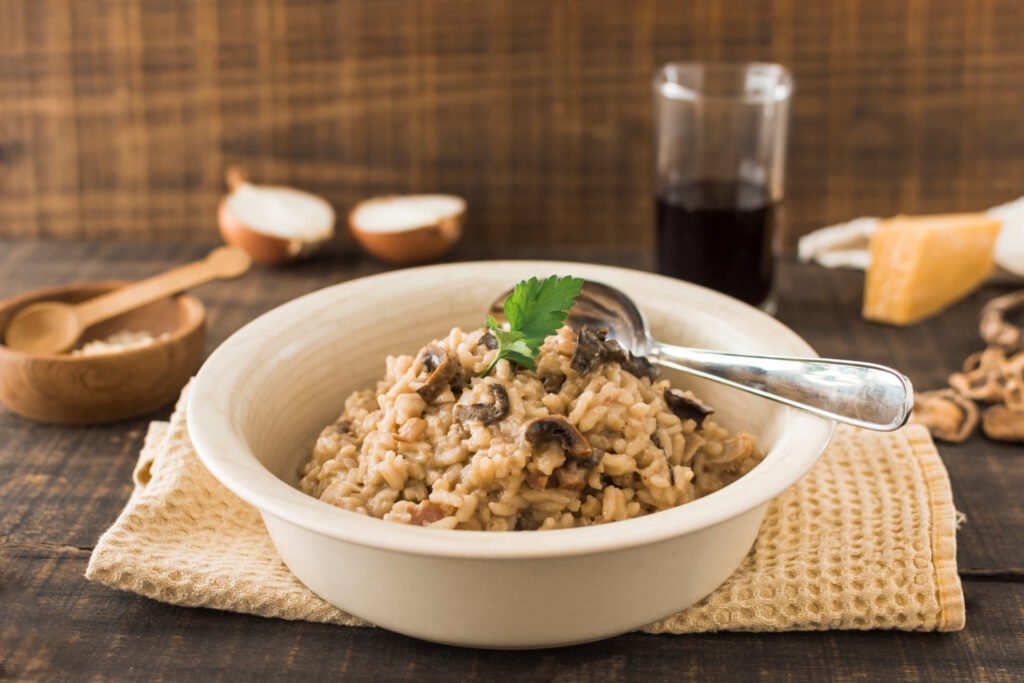
Brown rice is one of the healthiest types of rice, largely because it’s a whole grain. Unlike white rice, which is stripped of its outer layers during processing, brown rice retains the bran and germ, which are packed with nutrients. It’s rich in fiber, antioxidants, and essential minerals such as magnesium, manganese, and zinc. These nutrients contribute to improved digestion, better heart health, and stable blood sugar levels.
Nutritional Facts (1 cup cooked):
- Calories: 248
- Protein: 5.54 grams
- Carbohydrates: 51.7 grams
- Fiber: 3.23 grams
Brown rice is particularly beneficial for those looking to manage their weight or blood sugar, as its high fiber content promotes a feeling of fullness and helps regulate glucose levels. Studies have shown that replacing white rice with brown rice can reduce the risk of Type 2 diabetes.
2. Black Rice
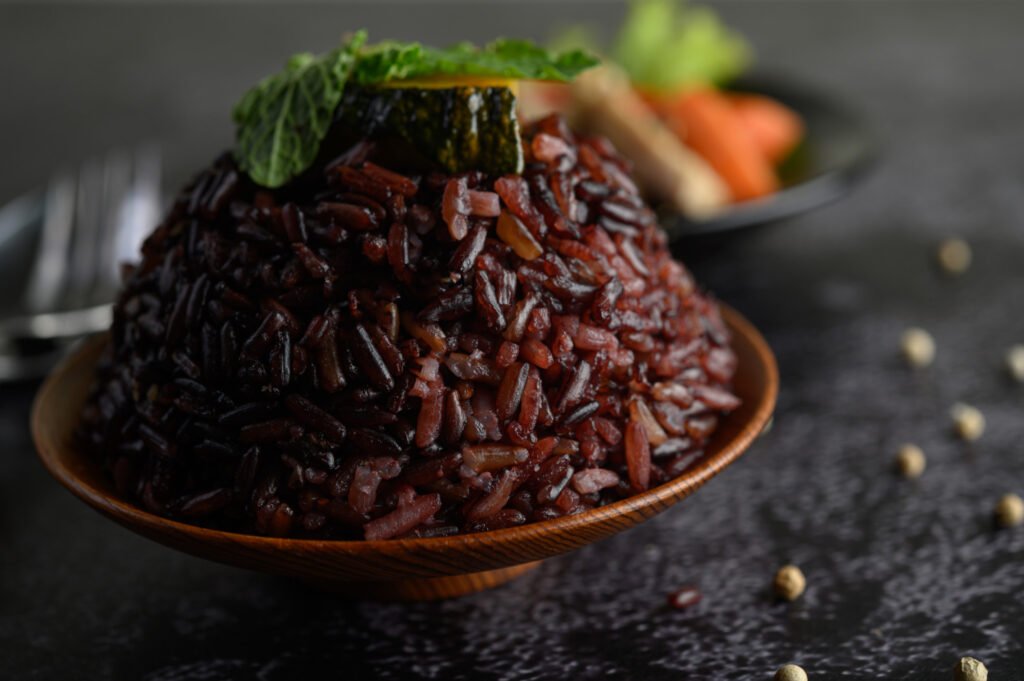
Related : Rice Cakes Healthy Benefits Risks and Snack Ideas
Black rice, often called “forbidden rice,” has been prized for its rich nutritional profile. Its deep black color comes from anthocyanins, powerful antioxidants that are also found in blueberries and other dark-colored fruits and vegetables. These antioxidants help fight inflammation, protect against heart disease, and may even reduce the risk of cancer.
Nutritional Facts (2/3 cup dry):
- Calories: 170
- Protein: 4 grams
- Carbohydrates: 39 grams
- Fiber: 2 grams
Black rice has the highest antioxidant activity among rice varieties and is a great choice for those looking to boost their intake of these protective compounds. Although less commonly available than other rice types, black rice offers substantial health benefits, making it worth seeking out.
3. Red Rice
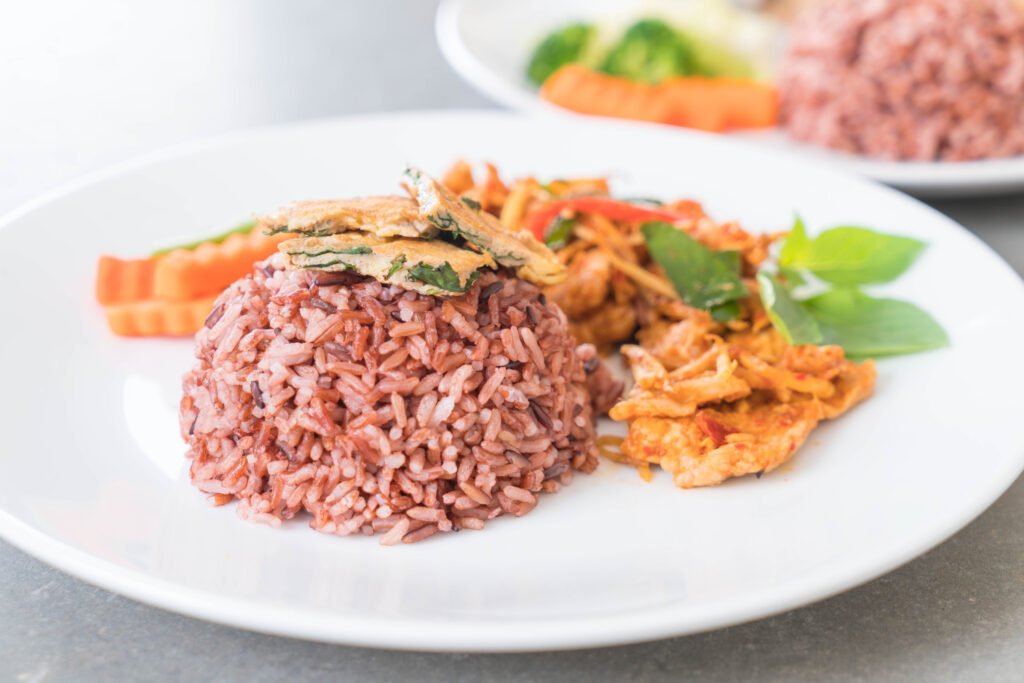
Red rice is known for its vibrant color and high nutritional value. Like black rice, it contains anthocyanins, which give it its reddish hue and provide antioxidant benefits. Additionally, red rice is an excellent source of iron and zinc, both of which are essential for immune function, energy production, and overall well-being.
Nutritional Facts (45 grams dry):
- Calories: 160
- Protein: 4 grams
- Carbohydrates: 37 grams
- Fiber: 1.98 grams
Red rice is commonly grown in Southeast Asia and is often enjoyed for its nutty flavor. It’s a great option for those looking to increase their intake of minerals and antioxidants. Including red rice in your diet can help improve blood circulation and support healthy immune function
Related : health benefits of purple rice
4. Purple Rice

Purple rice is becoming increasingly popular due to its vibrant color and health benefits. Like black and red rice, it is rich in anthocyanins, which provide powerful antioxidant properties. However, purple rice also stands out for its ability to help regulate blood sugar levels, making it an ideal choice for people managing diabetes or those looking to maintain stable glucose levels.
Nutritional Facts (1/4 cup dry):
- Calories: 140
- Protein: 5.98 grams
- Carbohydrates: 30 grams
- Fiber: 1.98 grams
Purple rice has been shown to lower post-meal blood sugar spikes, making it a good option for those looking to control their blood sugar. This variety is a flavorful and visually appealing alternative to traditional white rice.
5. Wild Rice
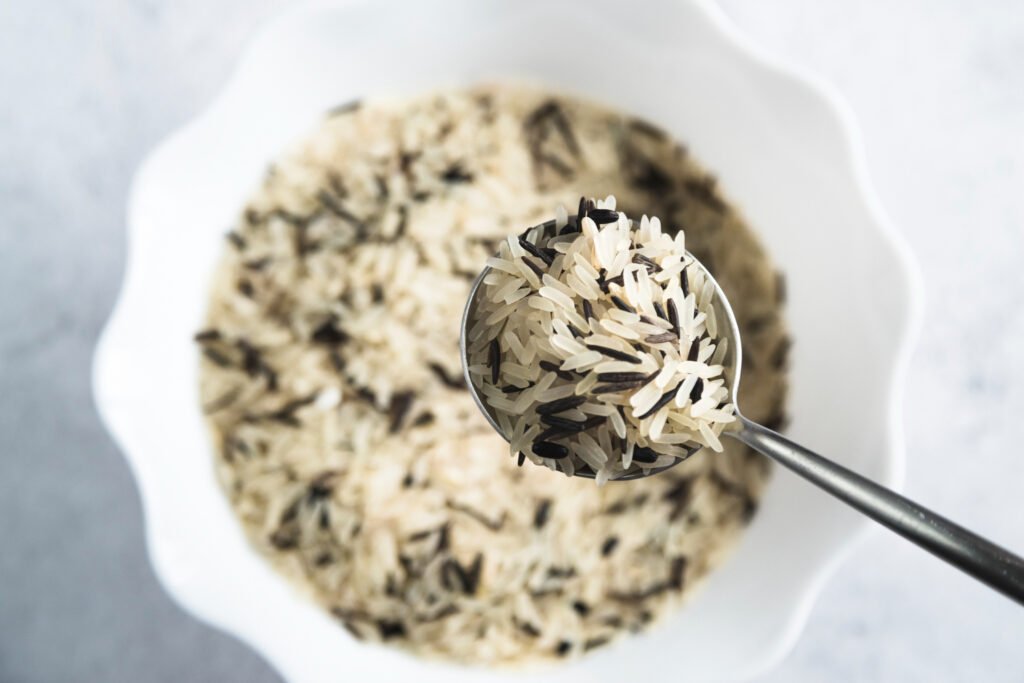
Though not technically rice, wild rice is often grouped with other rice varieties due to its similar preparation and nutritional profile. Native to North America, wild rice is a type of aquatic grass that is exceptionally high in protein, fiber, and antioxidants. Its nutty flavor and chewy texture make it a delicious and nutrient-dense addition to various dishes.
Nutritional Facts (1 cup cooked):
- Calories: 166
- Protein: 6.54 grams
- Carbohydrates: 34.9 grams
- Fiber: 2.95 grams
Wild rice offers more protein than most rice varieties, making it a great choice for those looking to increase their protein intake without consuming animal products. Its high fiber content also promotes healthy digestion and helps maintain a balanced blood sugar level
Related : Rice Water for Healthier Hair
How to Incorporate Healthier Rice Into Your Diet
Switching to healthier rice options is simple and can significantly boost the nutritional value of your meals. Here are a few tips for incorporating these nutrient-rich rice varieties into your diet:
- Opt for Brown Rice Over White Rice: Brown rice is widely available and can be used in any recipe that calls for white rice. It’s an easy way to increase your fiber intake and get more vitamins and minerals from your grains.
- Add Black or Red Rice to Salads: These colorful rice varieties make a great base for salads, providing a boost of antioxidants and a unique texture.
- Use Wild Rice in Soups and Casseroles: The nutty flavor and chewy texture of wild rice pair well with hearty soups and casseroles.
- Try Purple Rice in Stir-Fries: The slightly sweet flavor of purple rice works well in stir-fries and other Asian-inspired dishes.
- Create Rice Bowls: Combine your favorite rice variety with vegetables, lean proteins, and a flavorful sauce to create a nutrient-dense rice bowl.
The Takeaway
When it comes to selecting the healthiest rice, the best option largely depends on your individual health needs and dietary preferences. Brown rice remains one of the top choices for its balance of nutrients and accessibility. However, black, red, and purple rice varieties are excellent options for those looking to add more antioxidants and unique flavors to their meals. Wild rice, while technically a grass, is another nutrient-dense option that provides high levels of protein and fiber.
Ultimately, incorporating a variety of rice types into your diet ensures that you get a wide range of nutrients and health benefits. Whether you’re aiming for better heart health, improved digestion, or stable blood sugar, there’s a rice variety that can help you meet your health goals.
By making mindful choices about the types of rice you consume, you can enjoy the versatility and nutritional benefits this ancient grain has to offer
Frequently Asked Questions
- What is the healthiest type of rice?
- Brown rice is considered one of the healthiest options as it is a whole grain and retains the bran and germ, providing more fiber, vitamins, and minerals. Black rice and red rice also offer high levels of antioxidants, making them excellent choices for added health benefits.
- Is black rice healthier than brown rice?
- Black rice has more antioxidants, specifically anthocyanins, which give it its dark color and provide additional anti-inflammatory and heart-protective benefits. However, both black and brown rice are nutrient-dense, offering different health advantages depending on your dietary needs.
- Can wild rice help with weight management?
- Yes, wild rice is high in protein and fiber, which promotes fullness and supports weight management. Its high nutritional content also helps in maintaining balanced blood sugar levels, making it a great option for those looking to manage their weight.
- Is purple rice good for people with diabetes?
- Yes, purple rice is beneficial for people managing diabetes. It has been shown to help regulate blood sugar levels and prevent post-meal blood sugar spikes, making it a healthier alternative to white rice for people with blood sugar concerns.


